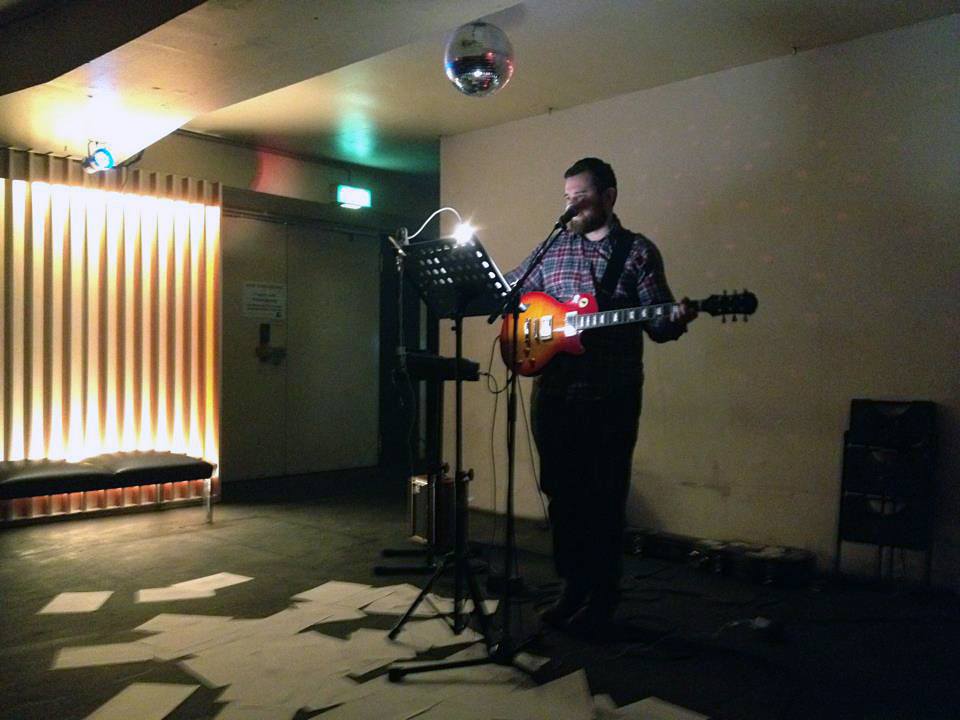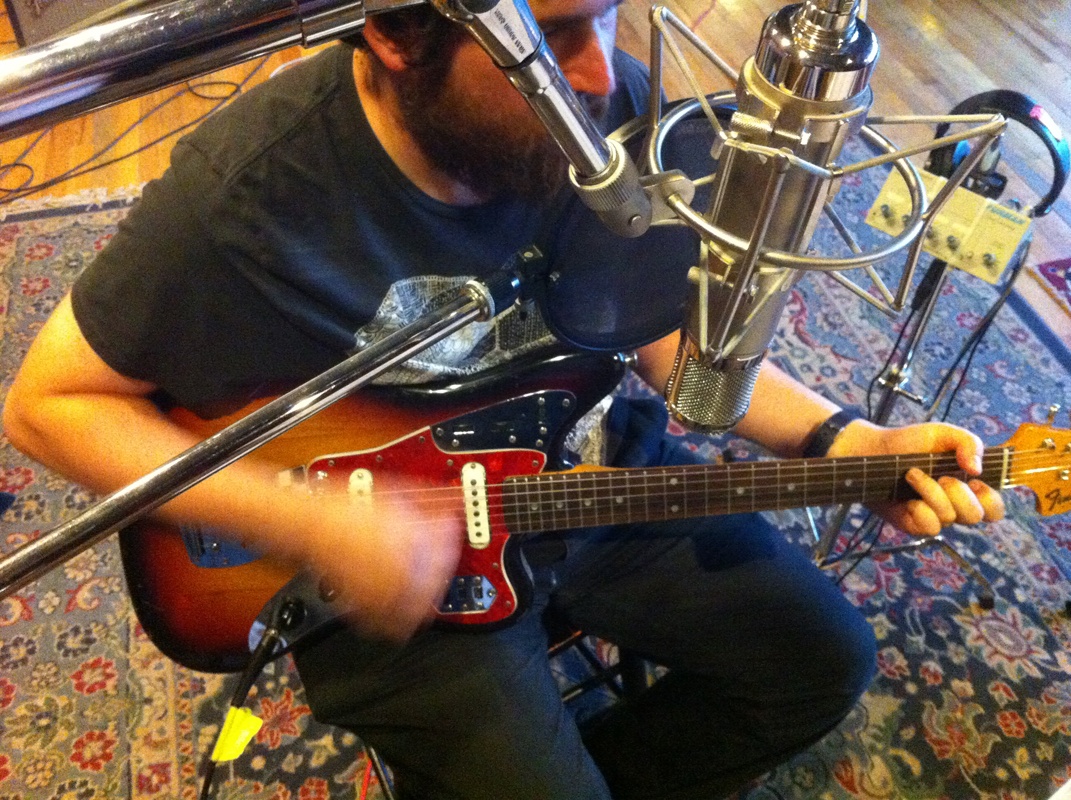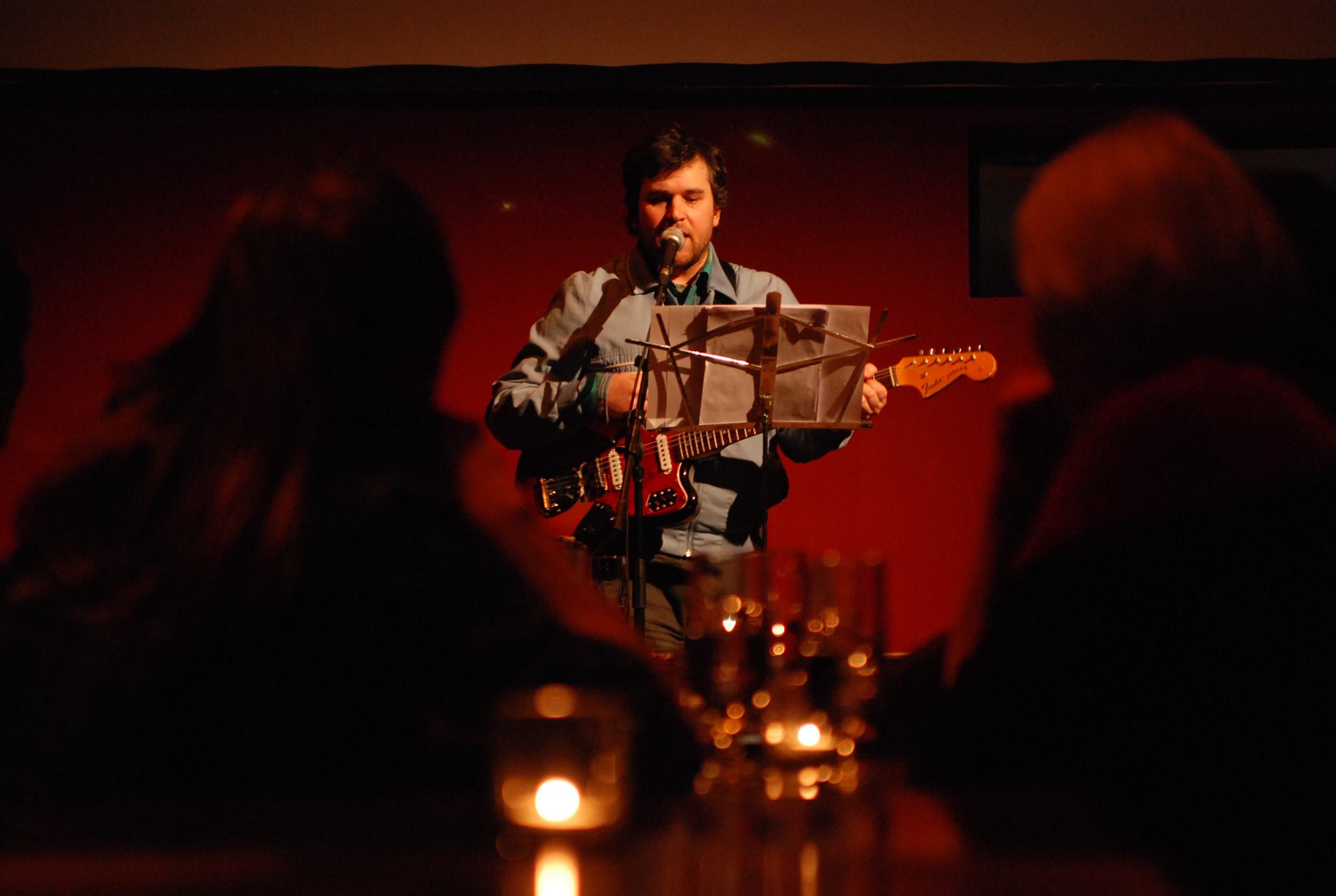Heather Jones: I arrived at your practice via the visual arts and performance, but then you describe yourself primarily as a writer, or rather, someone who makes literature. What are your thoughts on the relationship between literature and the visual arts? How do you navigate between the two disciplines?
Jacob Wren: Well, I usually describe myself as someone who makes “literature, collaborative performances and exhibitions.” No particular reason I chose to put literature first in that list, since those are three things I do, and I feel substantial parts of my life and practice are entangled in each of these questions – of course with an interest in so many other things as well. (It seems I prefer to think of them as questions, rather than as forms, histories or milieus. Even more, I like to think of them as open questions. Very open questions.) For most of my professional life I believe I’ve been most known for my performance work, but lately it’s been shifting, and now perhaps I’m somewhat more known for my books. I see no reason why, in the future, it might not shift again in some other, as of yet unexpected manner. And I’m always quite surprised how different people, if they know about my work at all, often know about it through completely different aspects, different entry points, and how this leads to understanding what I do in different ways. I also often try to understand what I do in different ways.
I’m not sure how I see the relationship specifically between literature and visual art. But as I’ve said before: one of my desires for twenty-first century art is that more of the barriers between the disciplines continue to break down. That, for example, artists working in conceptual poetry would know more about what’s happening in conceptual dance. I think, because of the way different art forms are taught, and also because of funding structures, there is not nearly enough interdisciplinary dialogue. Groundbreaking things begin to happen when artists stop thinking only about their own narrow field and examine art in some larger sense.
HJ: Is there a difference between how you consider the audience in your writing versus in your performance work, where the audience is in the same physical space as you?
JW: All of the performance work I have made based on the vulnerability and paradox of being yourself in a performance situation. It’s based on being in front of an audience, with as little performative armor as possible, and trying to open something up in the encounter between the performance and those watching it. Perhaps I see literature more as something that happens within the mental space of the reader. While I see performance as something that happens in the shared space between people, some of whom (the performers) come more prepared, while others (the audience) come less prepared, or prepared in a different way. As well, right now someone could be reading something I wrote (for example my answers to these questions) and I might have no idea they are doing so. The performance situation is a situation that, at least while I’m performing, completely consumes my in-the-moment awareness of it. It’s not happening somewhere else. For me, when it’s good, it’s happening very much in the here and now, and in this sense it might continue to help us understand what the ‘here and now’ is and wants to be about.

HJ: I want to jump back for a second – can you tell us a bit about your background and how you arrived at your current mode of creating work? Did the visual arts lead you to writing or vice versa (or something else entirely)?
JW: When I was a teenager I started making experimental theatre and writing poetry in Toronto. Very young, I had a certain degree of success in these endeavors. During this time I was mainly envious of visual art. It seemed much more critical and adventurous than anything happening in either of the fields I was youthfully working in. My performance work, mainly in reaction to what I saw as the limitations of theatre, even of the most experimental theatre, gradually became more interdisciplinary and began to occur in many different kinds of spaces. During this time I was also writing books that were also performance texts that were also strange, fragmented novels (or at least I thought of them as novels, even if no one else did.) And then I started writing about visual art for a variety of different kinds of art publications. And all of these lines have continued, becoming gradually more entangled. All of this also has a great deal to do with being an autodidact, learning through doing, struggling to find my way through what was most meaningful to me and what I actually wanted to do. There is obviously much more to say about all this but twenty-five years of very confusing artistic trajectory can be difficult to summarize.
HJ: You have a few different threads running in your practice, and my understanding is a bit tangled. What is PME-ART and is that distinct from your own individual practice? And do you consider your blog, A Radical Cut in the Texture of Reality, part of your artistic/literary practice? And are either of these related to you performance and/or publishing practices?
JW: PME-ART is an interdisciplinary group based in Montreal that I have now been working with for nineteen years. It is a group that partially existed before I joined them. Sylvie Lachance and Richard Ducharme had a company called PME and put it on hold to run their festival Les 20 jours du théâtre à risque (the translation I’ve always preferred is 20 days of theatrical risk.) I performed at the last edition of their festival in 1996 and after that we decided to begin working on projects together. There are many other artists working within PME-ART, some of whom come and go, and the work is most often highly collaborative. But I initiate the projects and, when necessary, lead the collaborations, though I try to lead them with as much openness as I can muster. I would say, these days, most of the performance projects I make take place within PME-ART. But over the years I have also done many other projects that have nothing to do with PME-ART. PME-ART is a French/English bilingual company, even though I don’t speak or understand French, and that bilingual aspect is perhaps what most distinguishes PME-ART from my other performance work. (Thought the PME-ART work I’m currently touring Norway with has no bilingual component. Rules are meant to be broken.)
I started A Radical Cut in the Texture of Reality about twelve years ago when I was having enormous difficulty getting any of my writing published. I was new to the internet, and I thought even if I just wrote some short things and put them up on a blog, at least it was a way for me to keep writing and keep feeling there was some reason to keep writing, that at least someone would read it. It’s definitely part of my writing practice, but I’ve used it in very different ways over the years. I suppose I mainly see it more like a sketchbook or notepad.
There was a moment around 2010 that I made a more conscience decision that I wanted to reinvent myself as a novelist. At the time, I really didn’t think it would work. I just wanted a new challenge. And, also, the ephemeral nature of performance was starting to wear on me. I felt I had made so much performance work and had so little to show for it. There was something more real and concrete about a novel. Or at least that’s how it seemed to me at the time.
But if your understanding of my practice is a bit tangled, my understanding of it is also rather tangled. And I don’t think I’d want it any other way. I’ve done different things that sometimes cross one another and at other times don’t cross at all. I want to keep trying to surprise myself, to not follow any of the established scripts, to try to escape my own bad habits. Whether or not I live up to such ideals is another question altogether. But there’s no one way of making art. There’s no right way to do it. For me art, in the largest possible sense of the word, is a process of learning what such statements may or may not mean in practice.
A modern philosopher who has never once suspected himself of being a charlatan must be such a shallow mind that his work is probably not worth reading.
– Metaphysical Horror, Leszek Kolakowski:
HJ: This might be too pointed a question, but in a previous interview of yours on The Rumpus, you said: “But now I think we feel art can be anything. And when something can be anything there is always the possibility for a crisis of meaning,” and again in a separate interview, “I find it very hard to maintain any interest in art …” This crisis of meaning and ambivalence towards art is endemic within the field. Can you expand on this idea as it relates to your own practice?
JW: Here is the first line from the book Metaphysical Horror by Leszek Kolakowski: “A modern philosopher who has never once suspected himself of being a charlatan must be such a shallow mind that his work is probably not worth reading.”
There are so many different ways of looking at this question. The world seems to be in quite bad shape these days – though this might have always been the case – and art seems like such a weak response when compared to all the overwhelming injustice and looming catastrophe that confronts us on a daily basis. What is a work of art when compared to rising fascism, climate chaos, the constant and unconscionable abuses of racism, patriarchy and capitalism. Art can often feel like sticking ones head in the sand and I have no real proof that it’s not. What’s worse, art can feel like an alibi for humanity. We might kill, torture, bomb and rape but we can’t be all bad because we also make beautiful things like art. This is normally the part where I’m supposed to come up with the counter-arguments: that art can change peoples hearts and minds. But I’m not so sure that it can, at least not in ways that are significant enough to make a difference. There are no individual solutions to collective problems.
So why do I keep doing it then? I have no good answer. I’m simply an artist (of some sort) and that’s what I’m here to do. I sometimes say I’m too much of an artist for my own good. As well, it might also be true that the ‘crisis of meaning and ambivalence towards art that is endemic within the field’ has little to do with such political questions. We live in strange times (and people in every age and era have also lived in strange times.) So many of the ways people have generated meaning for themselves during previous worlds and eras no longer seem to have the required support. A sense of place, connection and community are all difficult to come by today. (I would say that capitalism needs to destroy these things in order to have our labor when and how they need it for the best possible price.) But I also don’t want to romanticize the past. I suspect meaning has been difficult to come by at every point in history. Especially for those who can see through the empty platitudes that are so often used to stand in for it.
Nonetheless, I think these are important questions for art to ask itself. I’m all for an art that asks itself much harder questions, whatever form they might take.
HJ: At Rimi/Imir Scenekunst (RISK) you will be performing Every Song I’ve Ever Written, a project about “memory, history, things that may or may not exist, songwriting, the internet and pop culture.” What can the audience expect to see / hear on Thursday night?
JW: Every Song I’ve Ever Written is a project with four parts. On Thursday night I will be performing only one of these parts, what we call the Solo. (The other three parts are the Website, the Karaoke and the Band Night.) The Solo is the simplest one. Every Song I’ve Ever Written is a project about how when I was young I thought I would dedicate my life to writing and singing songs, but in the end it didn’t go that way. And how we think our lives will turn out one way but later they turn out differently. In it, I simply play the fifty-eight songs in chronological order, starting with the first song I wrote at age 14 and getting more tired as I get older (it takes almost five hours.) When I play these songs I have flashes of memory from my past, often things I haven’t thought about in a very long time, or had forgotten about altogether, and in between songs I will also share these flashes. It is a very personal performance and also about so many other things, how music integrates into our life, and how we change and don’t change as we grow up and resist growing up. (I’m still not sure I’m very convincing as an adult.)

HJ: The project as also been described as an internet performance, and there is a separate project website where visitors are encouraged to make their own recordings of the songs. How do you define an internet performance (is it durational?) and is there anything specific that you’re hoping to achieve with this project?
JW: We describe it as an internet performance because one of the four parts is the Website (www.everysongiveeverwritten.com) where anyone can download any of the songs I wrote when I was too young too know better and download them for free. And if they record their own version and send it to us we will also post their version on the website as well. Some people who come to the Karaoke have listened to the songs already and others are actually hearing and singing them simultaneously for the very first time.
I was thinking a lot about how the internet has changed the way I listen to music, and how the internet has also changed so many other things about how we take in and understand the world, and maybe focusing on how it’s changed the way we listen to music might also be a way of thinking about some of these larger internet questions.
With this project I’m hoping to think differently about songwriting, about what a song is, what it can do, how it can change, where it exists. And also to think about being young and imagining the future and wondering how to once again have a larger future we can all imagine. But the project doesn’t quite go that far.
Jacob Wren makes literature, collaborative performances and exhibitions. His books include: Unrehearsed Beauty, Families Are Formed Through Copulation, Revenge Fantasies of the Politically Dispossessed, Polyamorous Love Song and Rich and Poor. He is currently working on a book entitled Authenticity is a Feeling: My Life in PME-ART. As co-artistic director of Montreal-based interdisciplinary group PME-ART he has co-created the performances: En français comme en anglais, it’s easy to criticize, Individualism Was A Mistake, The DJ Who Gave Too Much Information and Every Song I’ve Ever Written. International collaborations include: a stage adaptation of the 1954 Wolfgang Koeppen novel Der Tod in Rom (Sophiensaele, Berlin), An Anthology of Optimism (co-created with Pieter De Buysser / Campo, Ghent), Big Brother Where Art Thou? (a project entirely on Facebook co-created with Lene Berg / OFFTA / PME-ART) and No Double Life For The Wicked (co-created with Tori Kudo / The Museum of Art, Kochi, Japan.) He travels internationally with alarming frequency and frequently writes about contemporary art.


